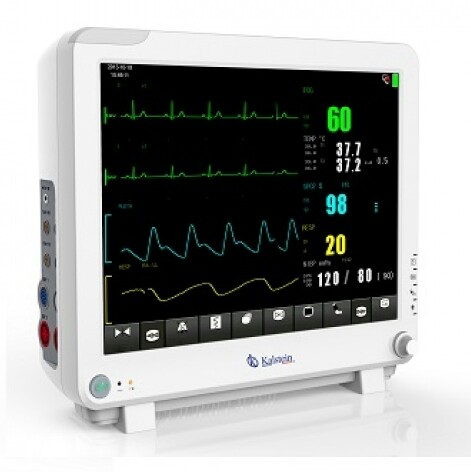A vital signs monitor is medical equipment designed to monitor the physiological vital signs of patients. This is done thanks to the real-time recording function of parameters such as ECG, non-invasive blood pressure, body temperature, functional oxygen saturation, among others, it allows a comprehensive analysis of the physiological conditions of the patient.
This equipment shows its information in the form of waves and numbers that the health personnel interprets and has an alarm system that alerts said personnel when there is an emergency situation or outside the desired limits in the patient. Therefore, they are very useful in all health institutions where emergency and hospitalization services are attended.
Its use is not restricted to a specific disease, because being a medical equipment that determines in a general way certain vital parameters of the body, it can be used in any patient who requires it, and depending on medical criteria.
How a vital signs monitor works
A vital signs monitor collects, displays, and stores all of the patient’s vital signs. This equipment works differently for each vital sign analyzed. For example, to measure the heart rate (ECG), it collects the electrical activity of the heart using electrodes and amplifies it. To measure the respiratory rate (RESP), it collects and amplifies the respiratory movements of the chest. To determine the amount of oxygen the patient (SpO2) does it through his pulse.
Use a thermometer to display the patient’s temperature (TEMP) at all times. Non-invasive blood pressure (NIBP) is obtained using an electronic sphygmomanometer, the cuff of which is placed on the patient’s arm.
All these parameters are displayed separately on the vital signs monitor. In the event that any of them are below or above normal for the patient’s age, or any other adverse activity is generated, an alarm is activated to notify the doctors and nurses. The alarms are visual and audible, although they can be easily silenced if you are trying to solve the problem that has generated them.
Vital sign monitoring is carried out especially in patients undergoing anesthesia, medications or any other treatment that determines the need for blood, a variation in medication or a volume substitute, such as, for example, a plasma expander.
What are the parameters that a patient monitor displays?
In addition to the five basic parameters that today’s patient monitors record and display, other parameters can also be recorded in more advanced models, such as:
- Invasive pressure (IP): by means of a sensitive catheter inserted into a patient’s artery, his blood pressure can be obtained with a precision greater than that offered by non-invasive pressure.
- Venous oxygen saturation (SvO2): a catheter is inserted into the superior vena cava to obtain greater precision in determining your blood oxygen level.
- Intracranial pressure (ICP): an intracranial catheter is inserted into the patient to measure the pressure within the skull.
At Kalstein we are MANUFACTURERS and we have excellent medical equipment such as patient monitors at the best PRICES on the market. So we invite you to take a look at the Products menu. HERE

